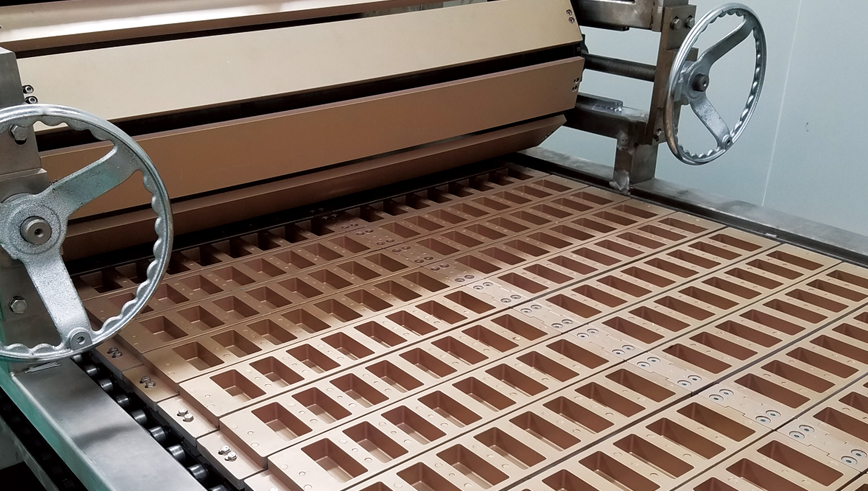In today’s fast-paced food manufacturing industry, efficiency, consistency, and scalability are key to meeting consumer demand. One area where this is especially evident is in the cake production line — an intricate system designed to streamline the baking process from ingredient mixing to final packaging. Whether producing sponge cakes, layer cakes, or individual desserts like cupcakes, a well-designed cake production line plays a crucial role in ensuring high-quality output while minimizing waste and labor costs.
A cake production line refers to a series of automated or semi-automated systems that work together to produce cakes on a large scale. These lines typically include components such as dough mixers, batter depositors, ovens, cooling conveyors, icing applicators, and packaging machines. Each stage is engineered to ensure precision, hygiene, and speed — essential factors for commercial bakeries aiming to maintain product uniformity and meet tight delivery schedules.
Synonyms like baking assembly line , industrial cake processing system , or automated dessert production unit are often used interchangeably to describe similar setups tailored to cake manufacturing.
The Benefits of Automation in Cake Production
Integrating automation into the cake production process brings numerous advantages. First and foremost, it significantly boosts productivity. Manual processes are not only time-consuming but also prone to inconsistencies in portioning, baking times, and finishing touches like frosting or decoration. With an automated cake manufacturing line , these variables are tightly controlled, leading to more predictable results and reduced human error.
Moreover, modern cake production systems are designed with food safety and hygiene at the forefront. Stainless steel components, programmable logic controllers (PLCs), and easy-to-clean surfaces help maintain compliance with strict health regulations. This ensures that every cake rolling off the line meets both quality and safety standards.
Key Components of a Typical Cake Production System
Mixing and Ingredient Handling : High-capacity mixers ensure even blending of ingredients, which is critical for achieving consistent texture and taste across batches.
Batter Depositing Systems : Precision depositors accurately portion the batter into molds or trays, maintaining uniform size and shape.
Oven Baking Units : Continuous or tunnel ovens provide even heat distribution, ensuring cakes bake thoroughly without overcooking.
Cooling Conveyors : After baking, cakes must be cooled before further processing. Cooling conveyors allow for gradual temperature reduction, preserving moisture and structure.
Icing and Decoration Stations : Automated icing machines and robotic decorators apply toppings with precision, enhancing visual appeal and reducing manual labor.
Packaging Equipment : Final packaging may involve wrapping, boxing, labeling, and palletizing, all of which can be integrated into the production line for end-to-end efficiency.

Customization for Diverse Cake Types
One of the greatest strengths of a modern cake production line is its adaptability. Whether a bakery specializes in traditional sponge cakes, cheesecakes, or novelty items like donut-shaped cakes, the system can be customized to accommodate different recipes, sizes, and shapes. Modular designs allow manufacturers to upgrade or reconfigure their equipment as needed, offering flexibility in response to market trends or seasonal demands.
For example, during festive periods like Christmas or Valentine’s Day, bakeries might shift focus to themed cakes. A flexible production setup enables quick adjustments to molds, decorations, and packaging materials, allowing for rapid product changeovers without halting operations entirely.
Sustainability and Energy Efficiency
As sustainability becomes increasingly important in food manufacturing, many cake production line manufacturers are incorporating energy-efficient technologies. Features such as heat recovery systems, low-energy consumption ovens, and smart controls help reduce environmental impact while lowering operational costs. Additionally, precise ingredient measurement minimizes waste, contributing to a more sustainable production cycle.
Choosing the Right Cake Production Line
Selecting the ideal setup depends on several factors including production volume, cake type, available space, and budget. Small to medium-sized bakeries may opt for semi-automatic systems that balance manual oversight with mechanized efficiency, while large-scale operations often invest in fully automated lines capable of producing thousands of cakes per hour.
Partnering with experienced suppliers who offer technical support, maintenance services, and customization options is crucial. Investing in a reliable and scalable cake production system not only enhances current capabilities but also supports future growth.






























